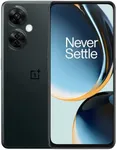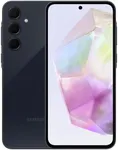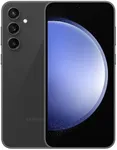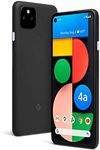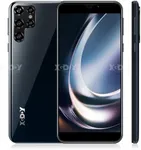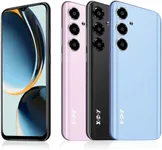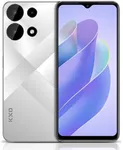Buying Guide for the Best Android Mobiles
Choosing the right Android mobile can be a daunting task given the wide variety of options available. To make an informed decision, it's important to understand the key specifications and how they align with your needs. By focusing on these specs, you can find a phone that offers the best performance, features, and value for your specific requirements.Processor (CPU)The processor, or CPU, is the brain of your phone. It determines how fast and efficiently your phone can run apps, games, and other tasks. High-end processors like those in flagship models offer the best performance and are ideal for gaming, multitasking, and heavy usage. Mid-range processors provide a good balance of performance and cost, suitable for everyday use and moderate gaming. Entry-level processors are more budget-friendly and are sufficient for basic tasks like browsing, social media, and light apps. Choose a processor based on your usage patterns: heavy users should opt for high-end CPUs, while casual users can save money with mid-range or entry-level options.
RAMRAM (Random Access Memory) affects how well your phone can handle multitasking and run multiple apps simultaneously. More RAM allows for smoother performance and better multitasking capabilities. High-end phones typically come with 8GB or more RAM, which is great for power users and gamers. Mid-range phones usually have 4GB to 6GB of RAM, which is sufficient for most users. Entry-level phones may have 2GB to 3GB of RAM, which is adequate for basic tasks. Consider your multitasking needs when choosing the amount of RAM: if you frequently switch between apps or use resource-intensive applications, opt for more RAM.
StorageStorage capacity determines how much data, apps, photos, and videos you can store on your phone. Phones come with varying storage options, typically ranging from 32GB to 512GB or more. High storage capacities are ideal for users who store a lot of media files, download many apps, or play large games. Mid-range storage options (64GB to 128GB) are suitable for average users who need a balance between cost and capacity. Entry-level storage (32GB) may be sufficient for users who primarily use cloud services and don't store much data locally. Consider your storage needs and whether the phone supports expandable storage via microSD cards.
Battery LifeBattery life is crucial for ensuring your phone lasts throughout the day without needing frequent recharges. Battery capacity is measured in milliampere-hours (mAh), with higher values indicating longer battery life. Phones with 4000mAh or more are generally considered to have good battery life, suitable for heavy users and those who are often on the go. Mid-range batteries (3000mAh to 4000mAh) are adequate for most users, providing a full day of use with moderate activity. Smaller batteries (below 3000mAh) may require more frequent charging and are best for light users. Consider your daily usage patterns and choose a battery capacity that matches your needs.
DisplayThe display is one of the most important aspects of a smartphone, as it's the primary way you interact with your device. Key factors to consider include screen size, resolution, and display technology. Larger screens (6 inches or more) are great for media consumption, gaming, and multitasking, while smaller screens (below 6 inches) are more compact and easier to handle. Higher resolutions (Full HD, Quad HD) provide sharper and clearer images, which is important for watching videos and reading text. Display technologies like AMOLED and OLED offer better color accuracy and contrast compared to LCD. Choose a display based on your preferences for size, clarity, and visual quality.
CameraThe camera is a key feature for many users, especially those who enjoy photography and social media. Consider the number of cameras, their megapixel count, and additional features like optical image stabilization (OIS), night mode, and wide-angle lenses. High-end phones often have multiple cameras with high megapixel counts (48MP or more) and advanced features, making them ideal for photography enthusiasts. Mid-range phones offer good camera performance with decent megapixel counts (12MP to 48MP) and some additional features. Entry-level phones may have basic cameras with lower megapixel counts, suitable for casual photography. Think about how important camera quality is to you and choose accordingly.
Operating System and UpdatesThe operating system (OS) version and update policy are important for ensuring your phone stays secure and up-to-date with the latest features. Most Android phones come with a version of the Android OS, but the frequency and duration of updates can vary by manufacturer. High-end and mid-range phones from reputable brands often receive more frequent and longer-term updates, ensuring better security and new features. Entry-level phones may receive fewer updates. Consider the importance of having the latest OS features and security patches when choosing a phone, and check the manufacturer's update policy.
Build Quality and DesignBuild quality and design affect the durability and aesthetics of your phone. Materials like glass, metal, and plastic are commonly used, with glass and metal offering a more premium feel and better durability. High-end phones often feature sleek designs with premium materials, while mid-range and entry-level phones may use more plastic. Consider how important the look and feel of the phone are to you, as well as its durability. If you tend to drop your phone often, a more rugged design or a good protective case might be important.
ConnectivityConnectivity options like 4G/5G support, Wi-Fi, Bluetooth, and NFC are important for ensuring your phone can connect to networks and other devices. 5G support is becoming more common in high-end and some mid-range phones, offering faster internet speeds. Wi-Fi and Bluetooth are standard in most phones, but newer versions (Wi-Fi 6, Bluetooth 5.0) offer better performance. NFC is useful for contactless payments and quick pairing with other devices. Consider your connectivity needs, especially if you rely on fast internet speeds or use features like contactless payments.

